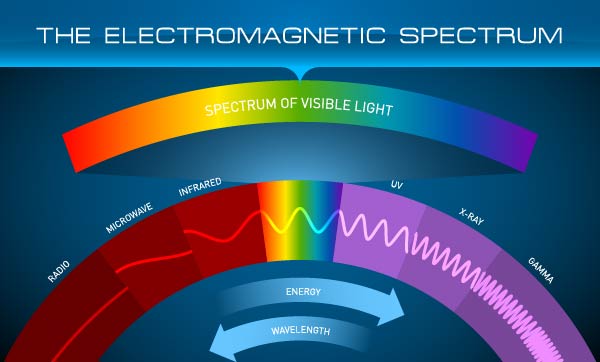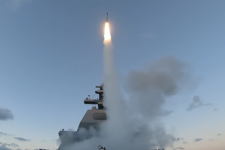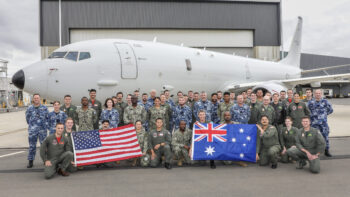
WASHINGTON: The Defense Department’s bureaucracy is the main barrier to implementing much-needed capabilities advancement in the electromagnetic spectrum (EMS), even as adversaries “aggressively pursue” their own.
“The consequences of getting this wrong could be disastrous,” HASC Subcommittee Ranking Member Rep. Elise Stefanik observed.
The failure to advance beyond “Cold War capabilities” has occurred despite three comprehensive DoD EMS strategies developed over the past eight years. The latest strategy, finished just months ago, might face the same fate amid DoD bureaucratic morass unless something changes, warned the Government Accountability Office.
The fresh warnings arrive even as many recognize the urgency of this initiative and its importance to the entire military. There was unanimous agreement among experts and lawmakers that the EMS is “the most important environment to modern warfare,” as Hudson Institute Senior Fellow Bryan Clark put it. Yet, he said, EMS remains the “most unheralded warfighting space” within the US defense community.
The EMS enables a broad range of military capabilities, from communications, signals intelligence, and command & control to sensing, navigation, and targeting. Despite its key role in integrating battle networks and the fact everyone uses it every day, “In many ways,” Clark said, “it’s the forgotten domain because we can’t feel it like the land or experience it like we do cyberspace on the computer.”
William Conley, former director for electronic warfare in the Office of the Secretary of Defense, said the US has persistently failed to elevate EMS to a strategic level versus viewing it as a “capability to achieve tactical outcomes.”
In contrast to the US, Conley highlighted how China, in particular, has succeeded in raising EMS to a strategic level within its military and has successfully blended electronic warfare, cyber, and space operations. “What [China has] done operationally is really pretty darn impressive,” Conley said. “The strategic question we’re faced with today is: How do we want to compete?”
China is not alone. In 2018, then-Special Operations Command chief Gen. Raymond Thomas said Russian activities in Syria were, “The most aggressive electronic warfare environment on the planet from our adversaries,” Subcommittee Chairman Rep. Jim Langevin recalled.
While the EMS is an “existential capability” to enabling U.S. military success, as Stefanik observed, “Our dominance in this domain is no longer secure.”
Despite the Defense Department developing comprehensive EMS strategies in 2013 and 2017, those were never fully implemented, according to testimony from Joseph Kirschbaum, director of GAO’s defense capabilities and management team.
“[The 2013 and 2017 efforts] weren’t bad strategies,” Kirschbaum said, who was the primary author of the December 2020 report entitled EMS Operations: DoD Needs to Address Governance and Oversight Issues to Ensure Superiority. As noted in the report, Kirschbaum said DoD simply failed to implement the 2013 and 2017 strategies because of “bureaucratic and organizational hindrances.” He added, “GAO thinks this pattern [of bureaucratic hindrance] threatens potential success of the 2020 strategy.”
The expert testimony came during an unusually late Friday afternoon hearing before the HASC cyber, innovative technologies, and information systems subcommittee.
The struggle to advance EMS capabilities is particularly puzzling because there appears to be broad agreement among DoD officials, Congress, and experts on current problems and potential solutions, allowing for some nuances.
The pressing problem now, most agree, is that the US has allowed its EMS capabilities to languish since the Cold War ended, even as China and Russia were “aggressively pursuing mechanisms to deny the spectrum” to U.S. forces in order to “take apart” U.S. capabilities, Clark said. Clark was the primary author of Winning the Invisible War: Gaining an Enduring U.S. Advantage in the Electromagnetic Spectrum. We are now behind our rivals, Clark said.
Kirschbaum echoed Clark, observing that the US spent the past 20 years focused on the “war on the terror,” while China and Russia recognized an opportunity to gain an advantage and diligently expanded and improved their EMS capabilities.
Conley compared the American and Chinese military approaches to EMS. In 2015, China formed its Strategic Support Force — an equal mix of EMS, cyber, and space capabilities — and then put the force on equal footing with its army, navy, and air force. In contrast, Conley observed, the US has maintained electronic warfare and spectrum management merely as a capability to achieve tactical outcomes. Conley argued the US can no longer view EMS as merely tactical.
The US must instead elevate EMS to strategic relevance and give it equal footing with other domains. “EMS can actually create opportunities,” Conley said. One example is EMS battle management — which Conley characterized as “the dynamic reconfiguration of sensors and networks, as well as EMS attacks in real time.” Such an approach, Conley said, “may become the preferred method” to project US power.
What’s needed to realize these goals then, aside from removing bureaucratic quagmire? Conley said the EMS strategy depends on innovation and tech development. But it can’t stop there. The US military must actually adopt, implement, and integrate innovations into tactics and operations. “Just inventing it is not adequate today,” Conley said.
Given adversaries’ advances, Clark said the US can’t afford to gradually grow EMS capabilities. Instead, a “leap ahead” is needed. To enable this leap, Clark argued the DoD should mount concepts and tech to regain the advantage in EMS. Doing so, Clark argued, entails pursuing an “important shift” toward capabilities like adaptability and maneuverability enabled by EMS.
Kirschbaum noted a good place to start would be basic management. Kirschbaum’s December 2020 report noted the past failures of DoD to develop a detailed implementation plan, provide leaders with authority to execute, and enact a process to review progress and assess results against intended outcomes. Clark agreed, adding we don’t need a “Pentagon staffing exercise that doesn’t result in real change.”
Everyone agreed the DoD’s acquisition process and program management must be reformed. Conley called for a “dramatic departure” from legacy platform- and program-centric investment strategies.
Conley also pointed to one more factor at play: the economy. He recalled a 2019 study he performed comparing US-China GDP defense spending and research & development budgets using a purchase power comparison. At that time, China’s military spending was only 60 percent and its R&D spending only 80 percent of the US’s. But China is poised to keep growing its economy. Conley observed, “This is a very different strategic situation” than the US faced in the Cold War, during which the Soviet Union’s economy never approached parity with the US.
Conley offered six major recommendations the US could adopt to advance EMS capabilities, which include:
- Incentivize R&D at US commercial companies for defense applications;
- Create an innovation framework for both traditional and non-traditional defense companies;
- Create policies to share data across the national innovation base and supply chain;
- Improve competitiveness by sharing work produced on government contracts;
- Ensure “realistic” EMS environment and threat capability in budgeting, testing, and training;
- Establish strategic EMS offensive function to create an “enduring advantage” in this space.
“The greatest risk I see today is continuing to apply a legacy strategy to the strategic realities of today,” Conley said.
Meanwhile, Kirschbaum noted that DoD will reach its self-imposed deadline for an EMS implementation plan for the 2020 comprehensive strategy in just under two weeks. He said he hasn’t seen any drafts or heard any updates from DoD yet, but given history and the stakes, many will be watching.
In Kirschbaum’s words: “It’s not an exaggeration to say the ability of our forces to successfully operate anywhere depends on success in EMS.”
Israeli F-35s were targeted in Iranian barrage but survived unscathed, IDF says
IDF Chief of Staff Herzi Halevi visited an Israeli base home to F-35s on Monday, emphasizing Iran’s missiles had caused only minor damage to the facility.


























